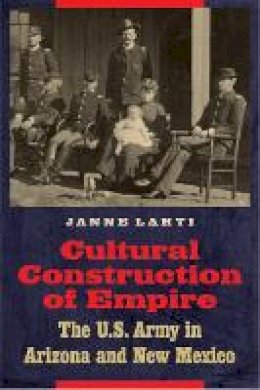
Cultural Construction of Empire: The U.S. Army in Arizona and New Mexico
Janne Lahti
From 1866 through 1886, the U.S. Army occupied southern Arizona and New Mexico in an attempt to claim it for settlement by Americans. Through a postcolonial lens, Janne Lahti examines the army, its officers, their wives, and the enlisted men as agents of an American empire whose mission was to serve as a group of colonizers engaged in ideological as well as military, conquest.
Cultural Construction of Empire explores the cultural and social representations of Native Americans, Hispanics, and frontiersmen constructed by the officers, enlisted men, and their dependents. By differentiating themselves from these “less civilized” groups, white military settlers engaged various cultural processes and practices to accrue and exercise power over colonized peoples and places for the sake of creating a more “civilized” environment for other settlers. Considering issues of class, place, and white ethnicity, Lahti shows that the army’s construction of empire took place not on the battlefield alone but also in representations of and social interactions in and among colonial places, peoples, settlements, and events, and in the domestic realm and daily life inside the army villages.
Product Details
About Janne Lahti
Reviews for Cultural Construction of Empire: The U.S. Army in Arizona and New Mexico
Robert Wooster Montana, The Magazine of Western History "This is a useful book that should be read widely."-C. Joseph Genetin-Pilawa, Journal of American History
C. Joseph Genetin-Pilawa Journal of American History "Cultural Construction of Empire is an engaging and thought-provoking look at how the U.S. Army did as much to expand the American empire through its social and cultural bearing as it did on the battlefield. This s an important contribution to the history of the Southwest and U.S. Army."-Gary L. Cheatham, Southwestern Historical Quarterly
Gary L. Cheatham Southwestern Historical Quarterly "Lahti has produced an excellent book, one that is richly researched, thoughtful, engaging, and nicely organized."-Daniel Herman, Journal of Arizona History
Daniel Herman Journal of Arizona History
